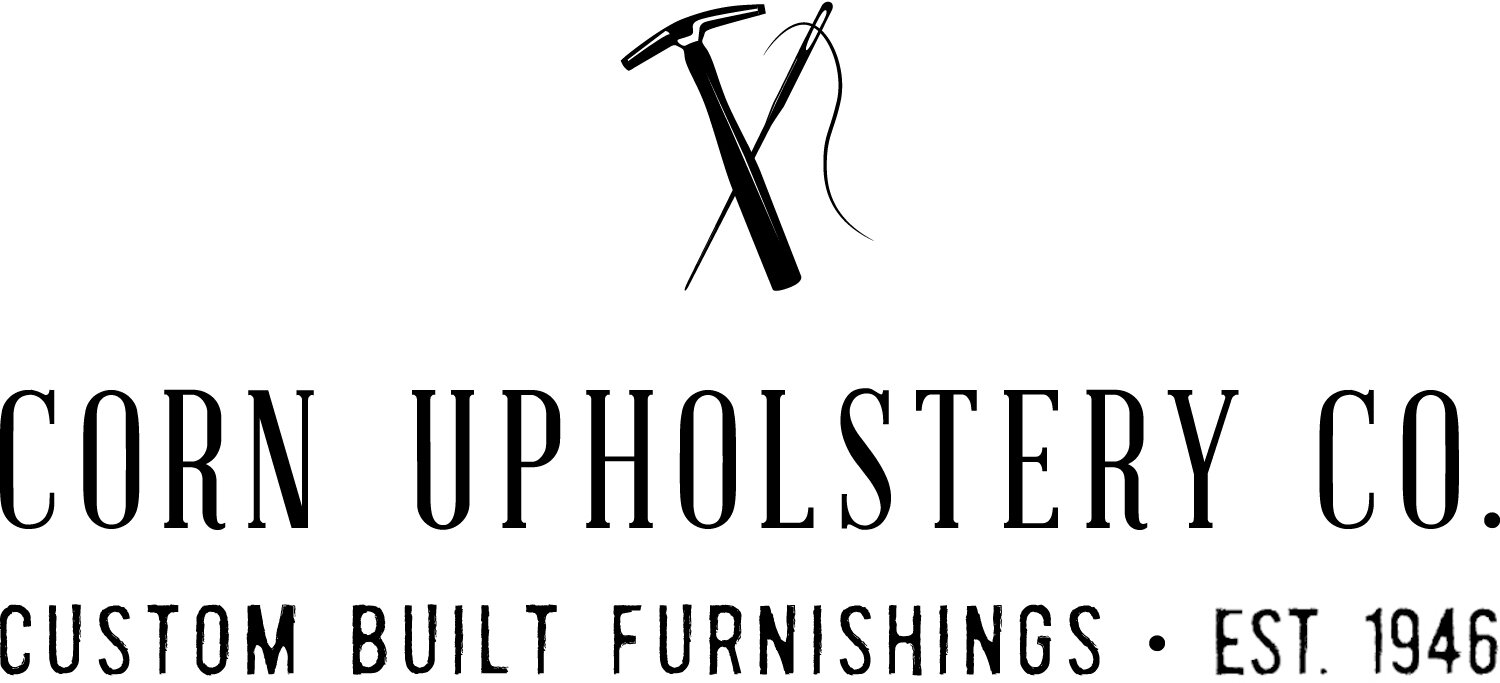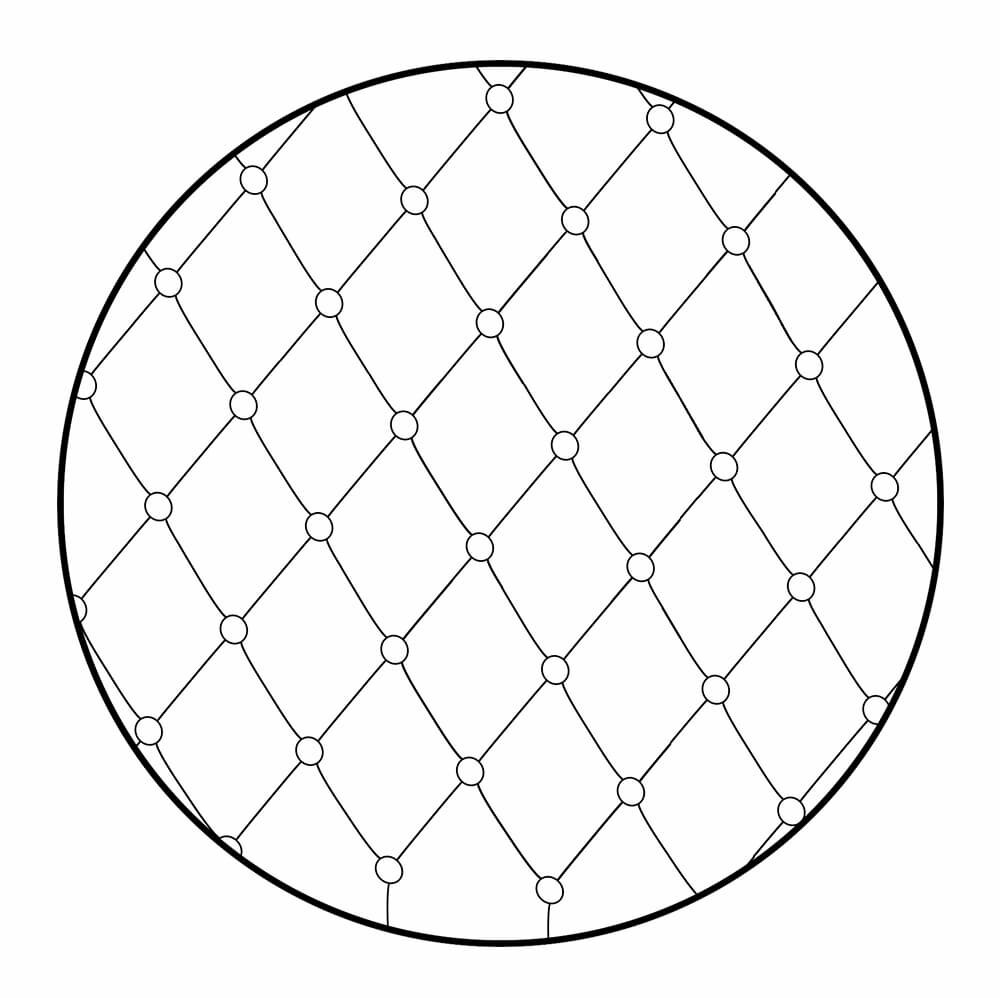Our Top 5 Furniture and Upholstery Tufting Types and Techniques - A Corn Upholstery Resource
Tufting is an elegant way to add texture and definition to your furniture pieces. The tufting/dimpled effect is achieved by anchoring the outside upholstery material to either the furniture frame or the backside of a cushion. This timeless design element can be applied to most any surface of furniture with many different approaches to produce interesting shapes and textures. Below are some of the main techniques we offer at Corn Upholstery.
Hand-folded secured with buttons
Hand-folded is the most expensive tufting style to produce. It provides a classic appearance with subtle variations resulting from being produced by hand. This tufting method requires a skilled upholster.
Sewn-in tufting with buttons
Sewn-in tufting with buttons is like hand-folded but will not have the thickness of folds and is more uniform. This technique can be used in both classic and modern interiors. This method is recommended if dust and cleanliness is a concern as this uniform surface allows for easy cleaning. Square tufting like this example can also be referred to as “biscuit tufting”.
Pulled-in button
Pulled-in button tufting is the least expensive of the tufting options. No folds or sewing connects the buttons which provides the least visually defined option. This tufting method is clean and is perhaps better suited for transitional to modern décor.
Sewn-in tufting without buttons (Blind)
Sewn-in tufting without buttons (sometimes referred to as blind-tufting) is a technique utilizing fabric which has been sewn from its rear face with the desired pattern (diamonds, squares or rectangles). This type of seam is referred to as “pinched” and results in a flange. The flange provides an anchoring point with which the tuft is pulled into the padding and secured to the frame. The anchoring point is located on the rear face or hidden side of the fabric and therefore allows for a blind tuft.
True blind tufts (Not recommended for hospitality furniture)
True blind tufting involves pulling a twine through the face of the upholstery material without buttons or seams. Most examples of this tufting method involve piercing the upholstery material with (4) twines to form an “+” or “X” pattern. The twine is secured to the frame in the same manner as the other types of tufting. The success of a true blind tuft depends largely upon the ability of the material to not fail under the constant tension produced by the twine once secured. Some materials will tear or cut under the pressure exerted by the twine which results in a tufting failure. Certain techniques can occasionally minimize the risk associated with failure of true blind tufts, however we recommend not using this method for hospitality furniture.
At Corn Upholstery, quality and longevity are core tenets. We go the extra mile to ensure our furniture is made right the first time. That is why we secure our buttons with double twine. The industry standard is to secure buttons with a single twine, but we choose to use double twine to increase reliability. Furthermore, we secure our tufting twine by tying and using cotton to prevent slippage. This method has been used for decades and provides a reliable way to secure the tufting twine. With the introduction of pneumatic staple guns to furniture manufacturing, the old practice of tying tufts has mostly disappeared in favor of securing twine to the frame with staples. Not at Corn Upholstery. It is our opinion that tying with cotton is more reliable than stapling and therefore it is our preferred practice.
Another aspect of quality control we don’t overlook is tufting on the seat. Over our years of furniture manufacturing we have found that tufting on the seat can present problems both obvious and hidden. The most obvious issue that occurs is the difficulty in cleaning a seat with tufting. These crevices trap debris and spills that can be nearly impossible to keep clean. The more troubling concern with tufting on a seat is the likelihood that the tufting will fail due to the extra forces placed upon them from the weight of guests sitting on the furniture piece. While tufting on the seat can be a very attractive and classy design, we will usually try to persuade a client against it and cannot provide a warranty for that aspect of the piece if it is insisted upon.
Regardless of your choice of tufting, you cannot really go wrong with this timeless design component. Tufting instantly elevates upholstered seating, creating not only a piece of furniture, but a work of art. For more examples of our tufting capabilities please visit our Products page on our website to view the many options offered by Corn Upholstery. Visit our Contact page to get your project started today!
If you value this upholstery industry information and the projects coming through our shop, follow the link below to stay connected through our monthly email newsletter!











